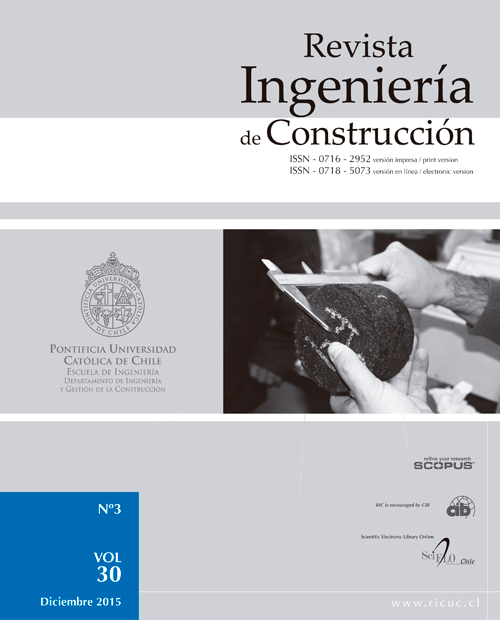Influence of seismic isolation system on bridge responses
DOI:
https://doi.org/10.4067/S0718-50732015000300006Abstract
The purpose of an isolation system is to provide an additional means of energy dissipation, thereby reducing the transmitted acceleration into the superstructure. In order to demonstrate the effectiveness of seismic isolation and understand the behavior of seismically isolated bridges a three-span continuous deck bridge made of reinforced concrete is considered. The bridge is modeled as a discrete model and the relative displacements of the isolation bearing are crucial from the design point of view of isolation system and separation joints at the abutment level. The systems presented here are passive control systems and the results of some important experimental tests are also included. The results show that the base shear in the piers is significantly reduced for the isolated system as compared to the non isolated system in the both directions of the bridge. This indicates that the isolation systems are effective in reducing the earthquake response of the bridge.

